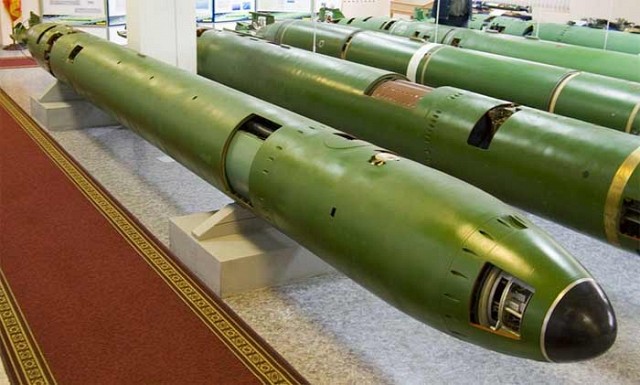SAET-60
Overview

SAET-60A
SAET-60A torpedo on display in the museum of the Gidropribor research institute.
Source: V. Zamyatin and E. Erokhin, http://www.missiles.ru -
© Copyright lies with original owner
1969 for SAET-60M
Mid to late 1960's (SAET-60M)
DEST / Dalnokhodnaya Elektricheskaya Samonavodyashchayasya Torpeda
Russian for "long range electric homing torpedo"
Description
Introduction
The SAET-60 is a heavyweight torpedo of Soviet origin. The SAET-60 is a passive acoustic homing torpedo that is launched by submarines against surface vessels. Most earlier Soviet torpedoes for use against surface vessels were either non-homing or wake homing. The SAET-60 uses an electric motor and has a 300 kg high explosive warhead with impact and proximity fuse. The SAET-60 has a long service history. This is mainly due to the limited anti surface vessel capability of the USET-80 dual purpose torpedo.